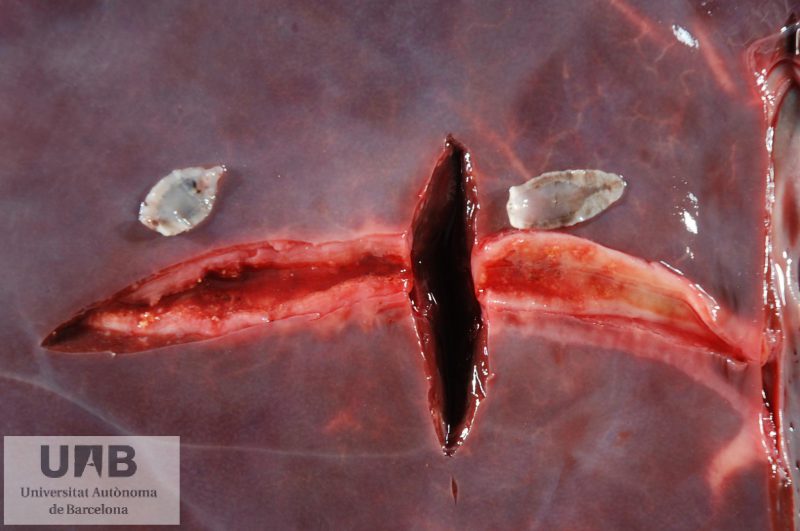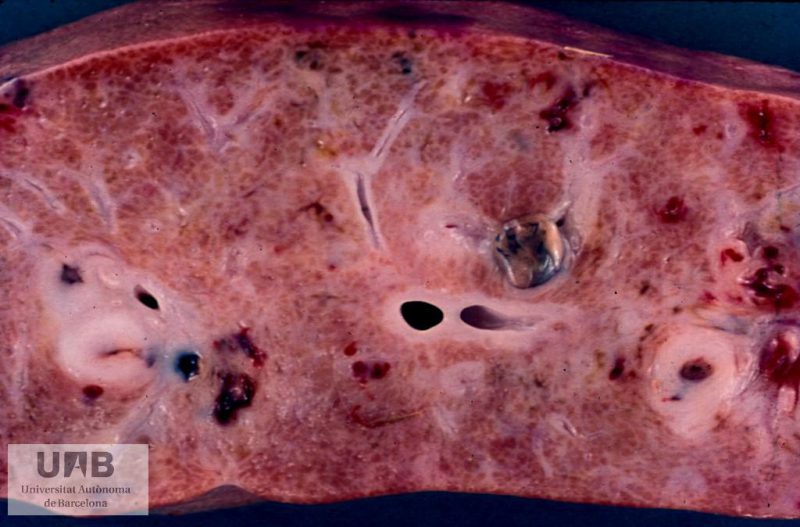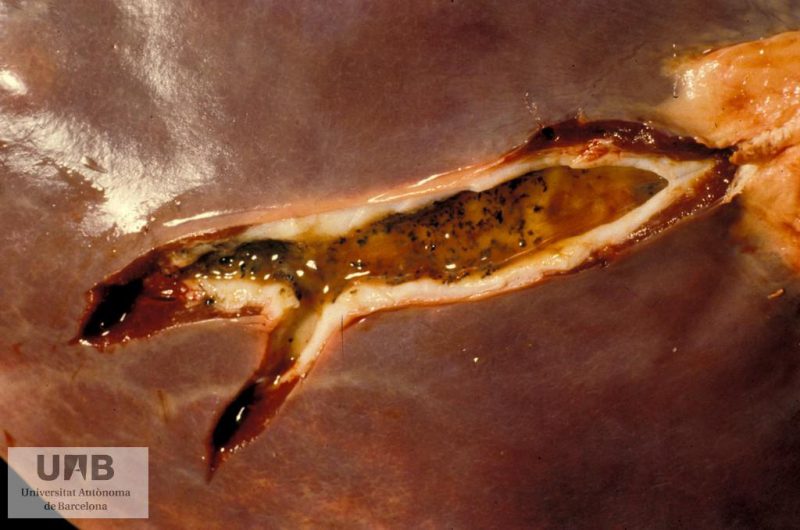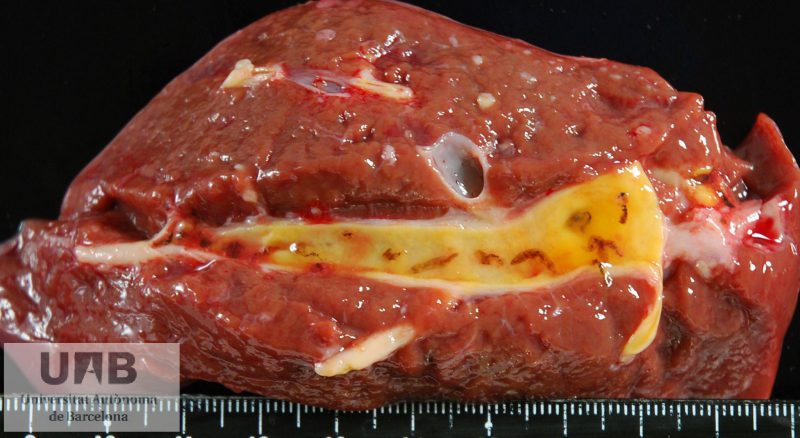Parasitic cholangitis in bovine liver
One of the most common reasons for bovine liver condemnation at slaughterhose is the distomatosis or infestation of the liver by flukes, parasites of the class trematoda (also called trematodosis). This nomenclature includes parasites of the families Fasciolidae, Dicrocoeliidae and Opistorchiidae.
Fasciola hepatica is one of the most common in cattle and the lesions it causes are:
- Larval migratory tracts on the liver, of a haemorrhagic nature and somteime including coagulative necrosis.
- Colangiohepatitis: colengiectasis (dilatation), enlargement and fibrosis of the bile ducts due to the presence of adult parasites in their interior.
A few images are shown here obtained from viscera condemned from bovine slaughterhouses and used for training of students at the faculty. The images have been obtained from the Veterinary Pathology Image Archive of UAB’s Veterinary Faculty.

Chronic cholangitis with presence of Fasciola hepatica adults in the interior of the bile ducts.

Chronic colangitis due to Fasciola hepatica. Notice the marked fibrosis of the bile ducts.

Chronic colangitis due to Fasciola hepatica.

Chronic colangitis for Dicrocoelium dendriticum (adults can be observed in the open bile duct). The lesions it cause are similar to those of Fasciola but less serious.


2 comment(s)
I’ve been finding similar things is there a place that I can either post or send pictures it’s really bizarre looking for the answers but they look exactly like that
Hello Nick, yo can submit picture at suport.escorxadors@irta.cat